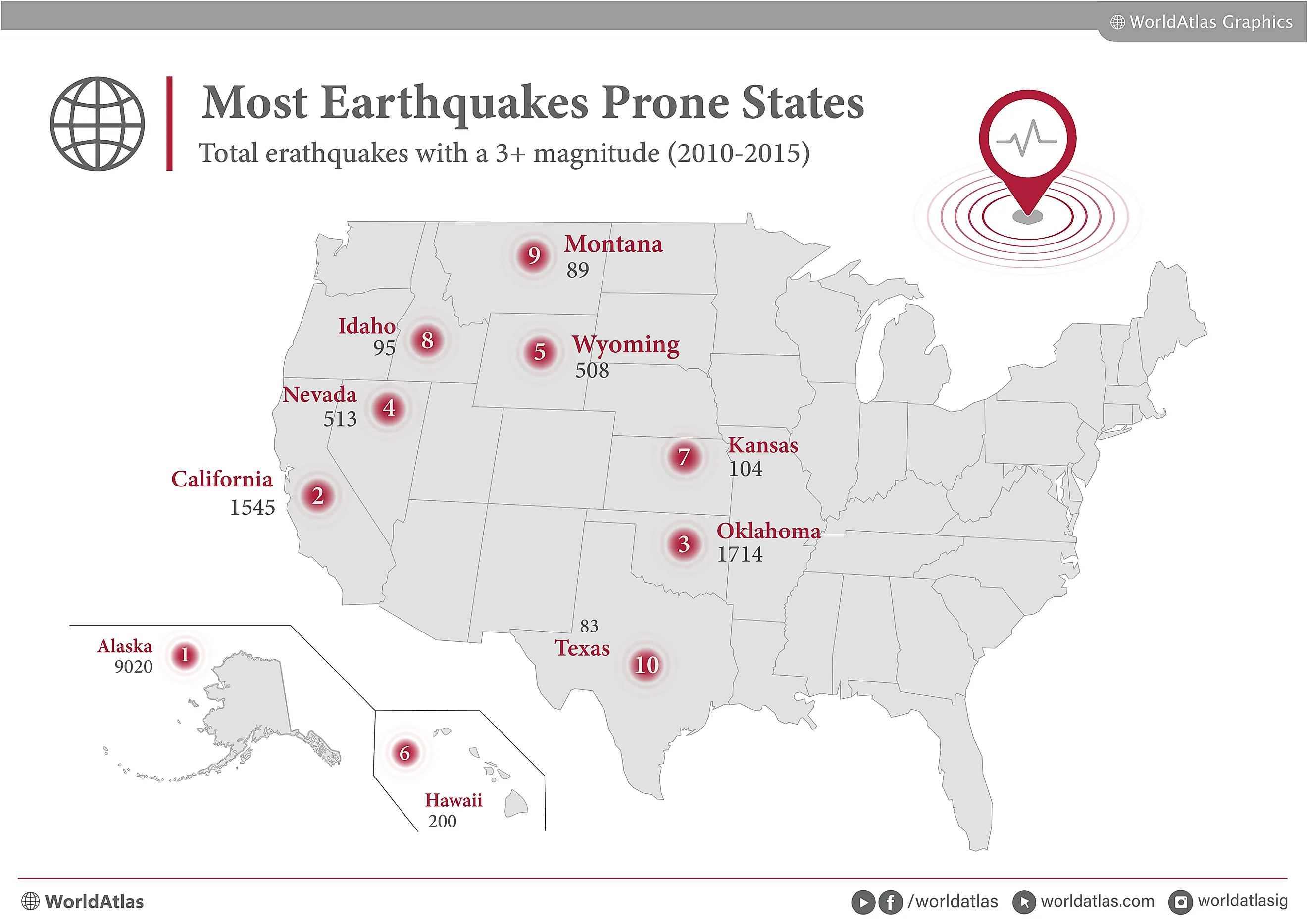
Where Do Most Earthquakes Occur In The US?
As a country isolated from war, economically hardy, and unabashedly robust - the United States has only one weakness, and this vulnerability lies directly beneath it. Tectonic plates shift and grind against each other worldwide, and massive population centers in North America are no exception. Some of those bustling cities are at more risk than others, meaning that a knowledgeable citizen is a surviving citizen. In fact, the most earthquake-prone states in the US are Alaska, Oklahoma, California, Nevada, Wyoming, Hawaii, Kansas, Idaho, Montana, and Texas. Through education and preventative measures, the worst does not have to be 'yet to come.' To tackle this issue, learn where these tumultuous events will likely occur, what is being done about it, and what you can do should an emergency cross your path.
- High-Frequency States
- Cities To Watch Out For
- Fault Lines Responsible
- Historical Disasters
- Earthquake Engineering
- How To React In An Emergency
High-Frequency States
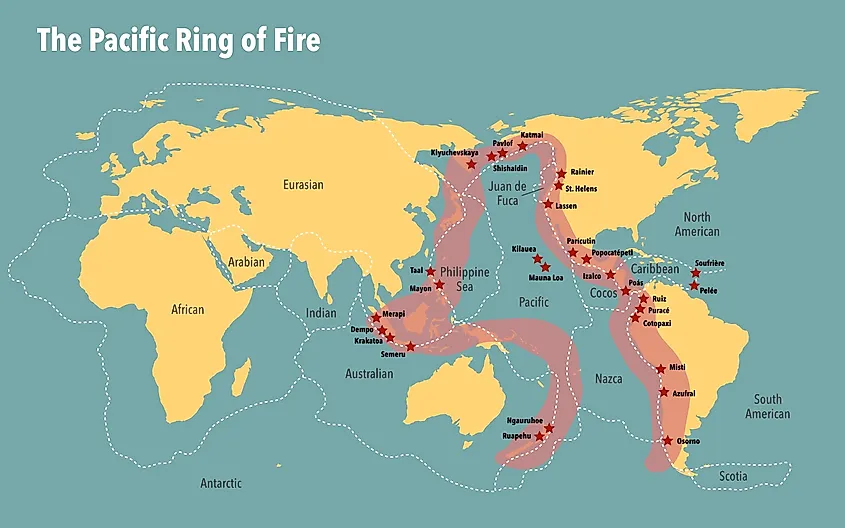
Regarding seismic activity, some states in the US are more prone to earthquakes than others due to their geological location and features. According to the United States Geological Survey (USGS), Alaska, California, and Hawaii have historically been states with very high earthquake activity. These states lie along the Pacific Ring of Fire, a region with intense tectonic activity due to subduction zones where one plate dives beneath another. In the last decade and a half, however, Oklahoma has surprisingly risen in the ranks to become one of the country's most earthquake-prone states.
Washington and Oregon, also located along the Pacific coast, also experience frequent earthquakes. The Cascadia Subduction Zone, off the two states' coast, is a boundary composed of two converging plates that could result in a massive earthquake in the next 50 years of up to a 9 or 10 in magnitude.
Nevada and Utah are also prone to seismic activity due to their location near several fault lines. In Nevada, the Basin and Range Province has been undergoing extension for millions of years, leading to faults at the base of nearly all mountain ranges in the state. Utah is home to several active faults in its mountain valleys that have recently produced moderate-to-large earthquakes.
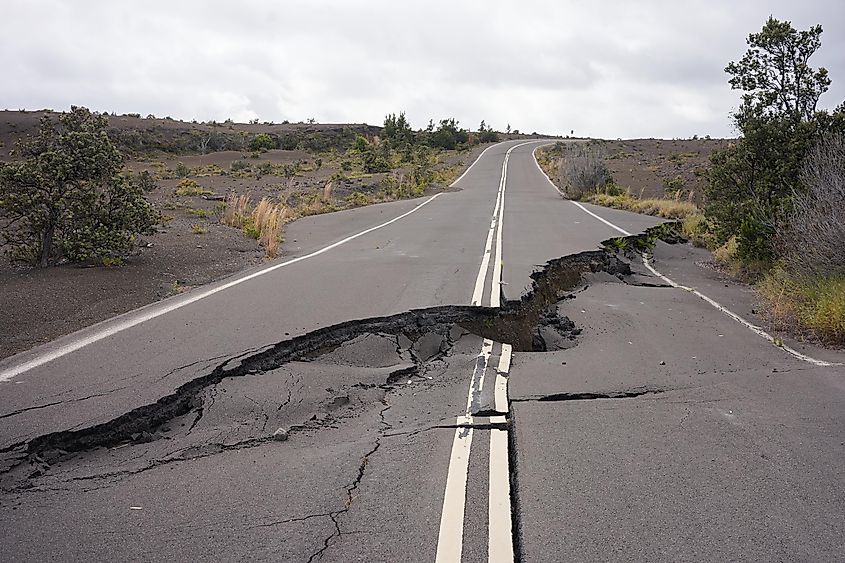
In recent years, Oklahoma and Texas have seen an increase in induced seismicity due to oil and gas drilling activities that involve injecting wastewater into underground disposal wells. Oklahoma has seen thousands of earthquakes since they began to increase in 2009 and in Texas, earthquakes have doubled since 2021.
Wyoming, South Carolina, Montana, and Tennessee also experience occasional earthquakes due to their location near active faults or tectonic boundaries. While less frequent than in other high-risk states mentioned above, it's still essential for residents in these areas to expect and prepare for potential seismic hazards.
The Most Earthquake Prone US States
| States | Total Earthquakes with a 3+ Magnitude (2010-2015) |
|---|---|
| Alaska | 9020 |
| Oklahoma | 1714 |
| California | 1545 |
| Nevada | 513 |
| Wyoming | 508 |
| Hawaii | 200 |
| Kansas | 104 |
| Idaho | 95 |
| Montana | 89 |
| Texas | 83 |
Cities To Watch Out For
While earthquakes can occur anywhere in the US, some cities are more at risk than others due to their location and proximity to fault lines. San Diego and Sacramento in California are near the San Andreas Fault, known for producing some of the most powerful earthquakes in history. Carson City in Nevada is also close to several active faults, including the Walker Lane and Carson Range faults.
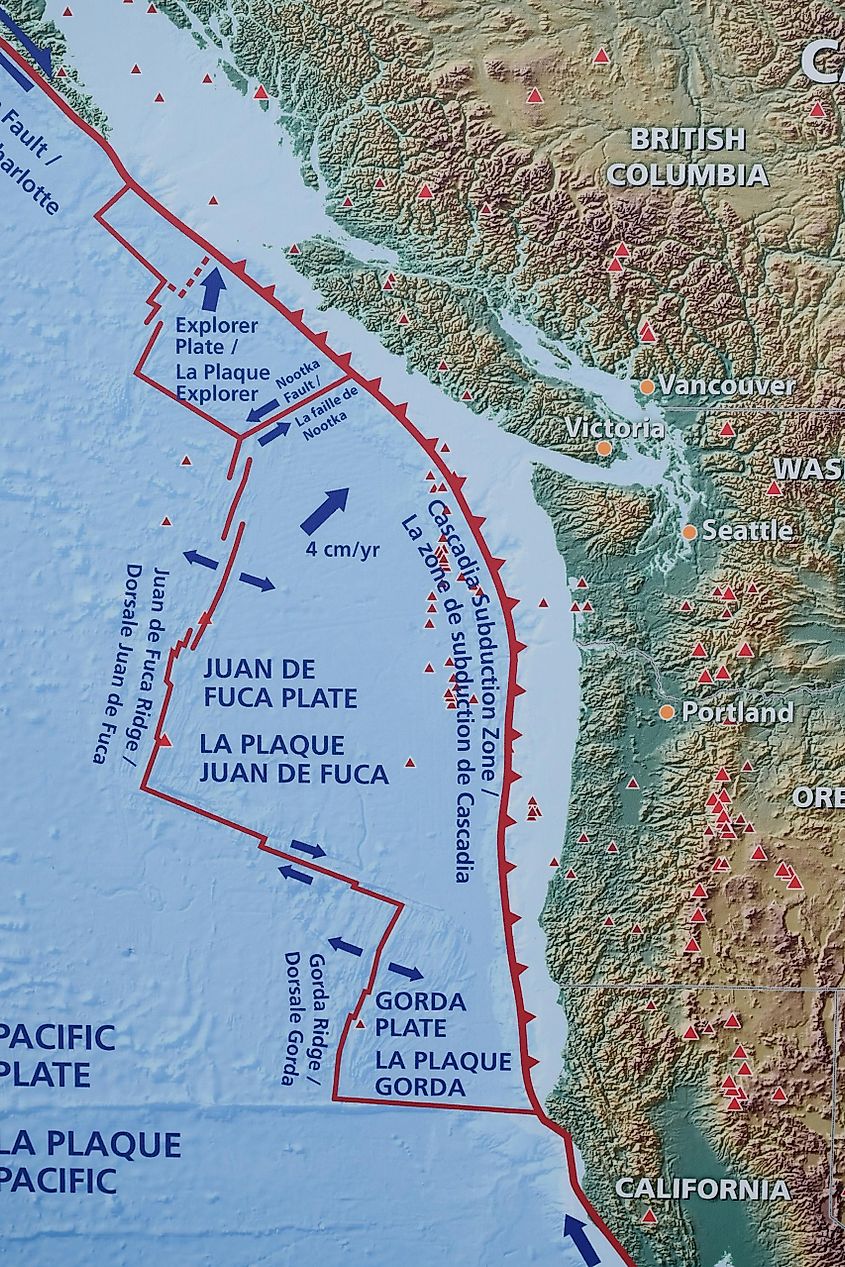
Seattle, Washington, lies on top of the Cascadia Subduction Zone, a major earthquake zone that stretches from Vancouver Island to Northern California. The city experienced a magnitude 6.8 earthquake in 2001 that caused significant damage to buildings and infrastructure. Portland, Oregon, and Vancouver, Canada are also at-risk cities of the Cascadia Subduction Zone.
In Memphis, Tennessee, earthquakes can occur along the New Madrid Fault Zone, which produced some of the largest earthquakes ever recorded in North America during 1811-1812. Charleston, South Carolina, is another city at risk due to its location near several active faults, such as the Summerville Fault.
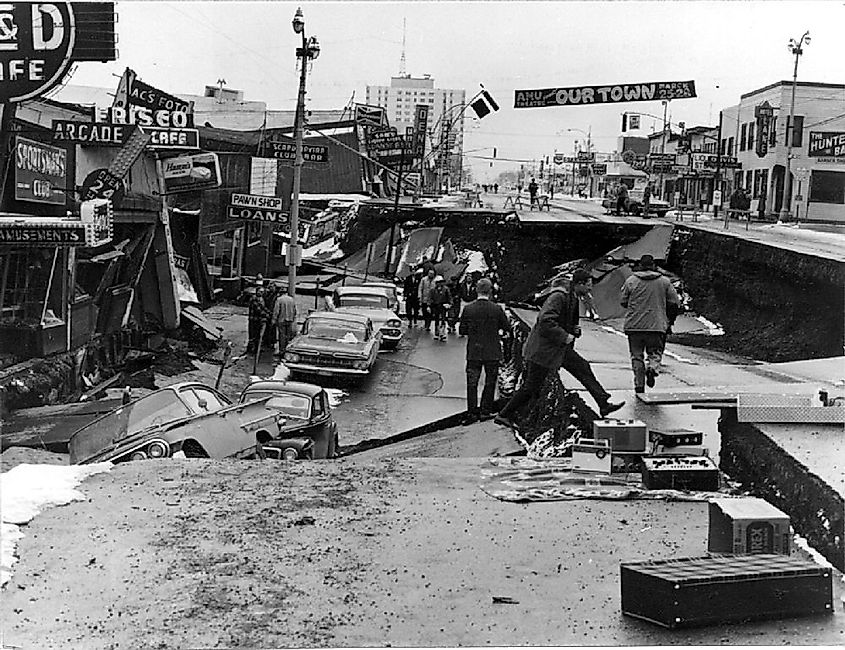
Anchorage, Alaska, is one of the most seismically active cities in the US due to its location along several tectonic plate boundaries. The city was devastated by a magnitude 9.2 earthquake in 1964 that caused widespread damage and tsunamis along coastal areas.
Regarding tsunamis, coastal cities across the US are also at risk if an earthquake occurs offshore or underwater. In addition to Anchorage, cities like San Diego and Seattle have developed evacuation plans in case of a tsunami warning.
Fault Lines Responsible
Most earthquakes in the US occur along tectonic plate boundaries or faults. The aforementioned Pacific Ring of Fire encircles the Pacific Ocean basin and is a hotspot for seismic activity due to its many subduction zones where one plate dives beneath another.
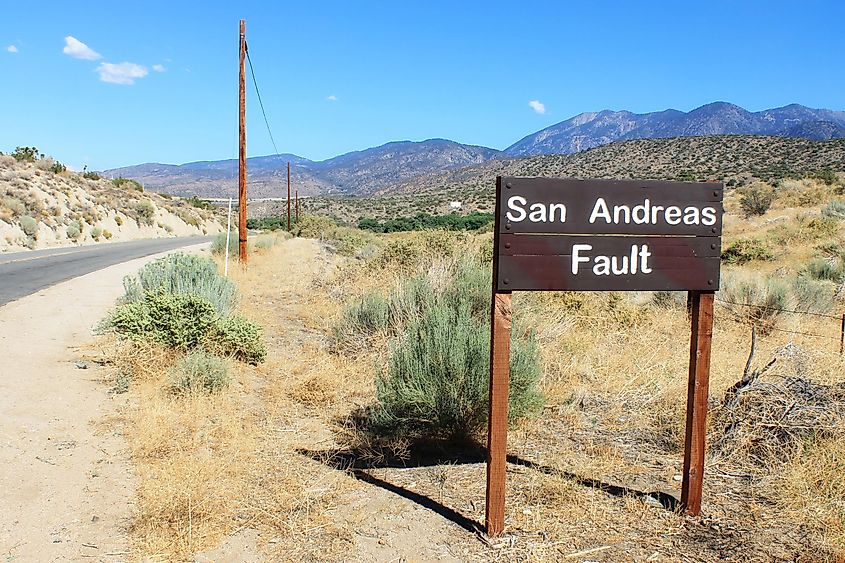
In California, the San Andreas fault system is responsible for much of the state's seismic activity. This fault runs roughly 800 miles through California and can produce large earthquakes that can cause significant damage. Another active fault in California is the Hayward fault, which runs through densely populated San Francisco Bay Area areas.
The Cascadia Fault Zone stretches from Northern California to British Columbia and has produced some of the largest earthquakes in US history. The Newport-Inglewood-Rose Canyon Fault Zone in Southern California is also a significant source of seismic activity.
In addition to these well-known faults, several others across the country pose a risk for earthquake activity. For instance, Missouri's New Madrid Fault Zone caused widespread destruction during earthquakes in 1811-1812. The Wasatch Fault Zone in Utah and the Denali Fault Zone in Alaska are also known for their potential to produce large earthquakes.
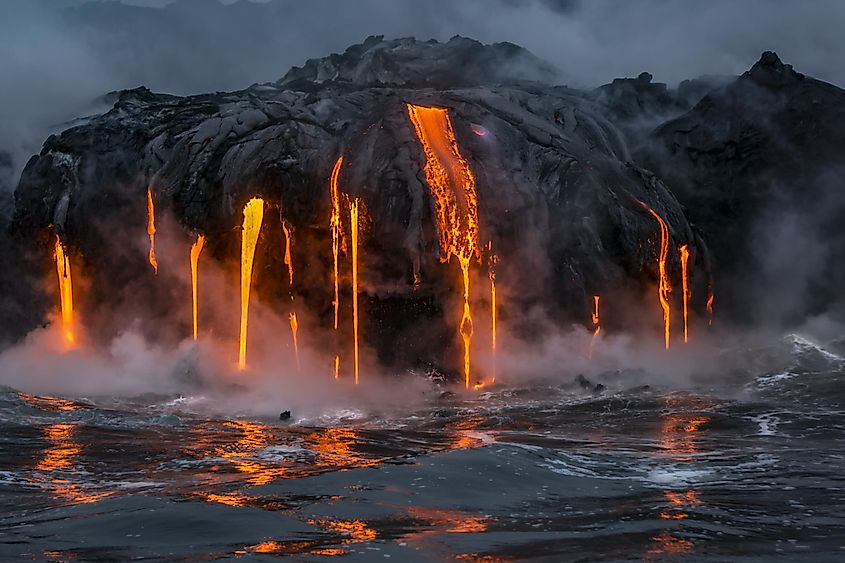
It is worth noting that Hawaii experiences seismic activity due to volcanism rather than fault zones. Volcanic eruptions continue to form the Hawaiian Islands from hotspots beneath the Earth's crust, which can produce earthquakes as magma moves underground.
Historical Disasters
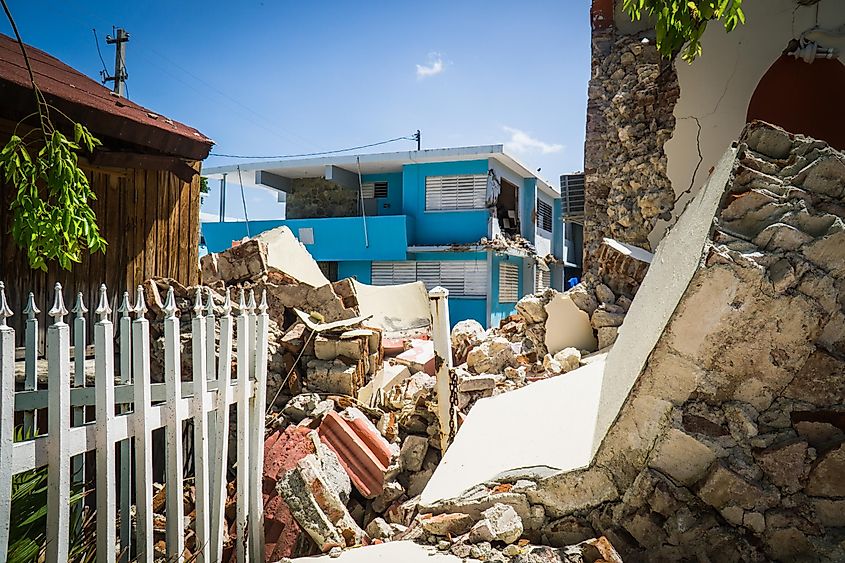
The US has experienced several devastating earthquakes throughout history that have caused loss of lives and damage to property. One of the most significant earthquakes in the country's history occurred off the Pacific Coast in January 1700, with a magnitude estimated at 9.0. This earthquake resulted from the subduction of the Juan de Fuca plate beneath the North American plate and triggered a massive tsunami that swept across the Pacific Ocean.
Another notable earthquake occurred in San Francisco in 1906, with an estimated magnitude of 7.9. The quake was responsible for over 3,000 deaths and destroyed much of the city, including its water supply system and many buildings made of unreinforced masonry.
More recently, one of the deadliest earthquakes in history struck Haiti, with shakes also being felt in the US territory Puerto Rico. This earthquake hit in January 2010, killing over 200,000 people and leaving millions homeless. A rupture along a fault line near Port-au-Prince caused the magnitude-7.0 earthquake.
In addition to these large-scale events, more minor but significant earthquakes occur regularly throughout the US. Earthquake monitoring systems, such as those operated by the USGS, help to identify potential hazards and mitigate their impact through early warning systems and other measures.
Earthquake Engineering
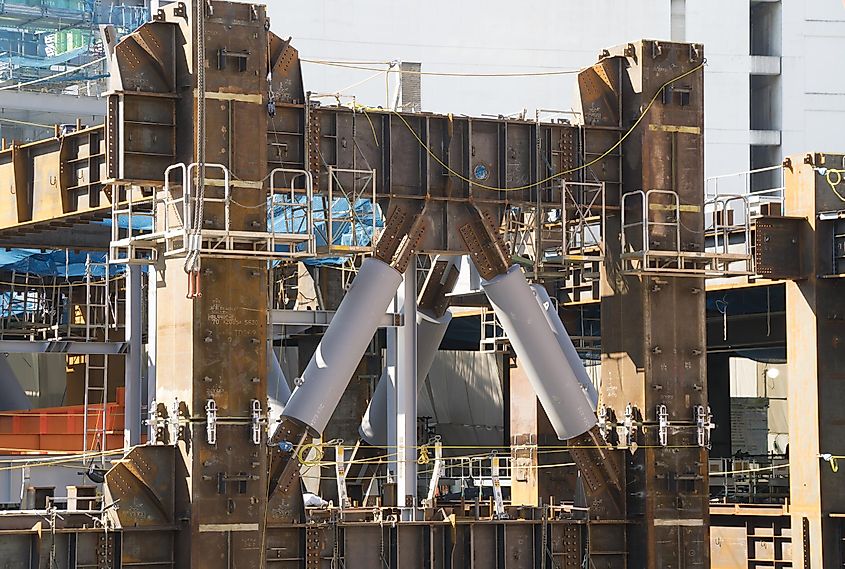
One earthquake engineering approach is isolating buildings from ground motion using base isolation systems. These systems utilize flexible bearings or pads between the foundation and the ground. The bearings absorb energy from the seismic waves, reducing their impact on the structure.
Another approach is making buildings more flexible by using innovative frame designs that deform without collapsing. For example, some structures use buckling-restrained braces, which are steel braces encased in concrete-filled tubes. These braces can absorb large amounts of energy during an earthquake while preventing excessive lateral movement.
In addition to these measures, engineers also incorporate energy dissipation devices into building designs. These devices include dampers, which are shock absorbers that reduce structural vibration during an earthquake.
How To React In An Emergency
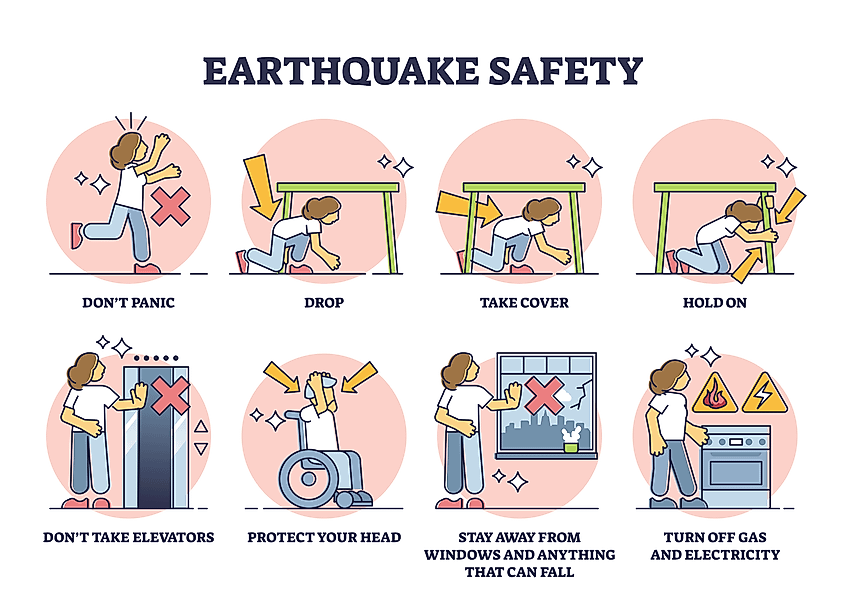
In an earthquake emergency, staying calm and following safety protocols that can help protect yourself and others is essential. The first step is to drop down to the ground, take cover under a sturdy piece of furniture or against an interior wall, and hold on until the shaking stops. Avoid doorways, windows, or any objects that could fall on you.
If you're outdoors during an earthquake, move away from buildings, trees, power lines, and other structures that could collapse or pose a hazard. Stay in open spaces until the shaking stops, and avoid standing near tall buildings or cliffs that could topple over.
Having an emergency kit prepared beforehand with essentials like water, food, first aid supplies, and flashlights is also crucial. Make sure your equipment is easily accessible and stored in a secure location. Practice evacuation drills with your family or coworkers so everyone knows what to do in case of an earthquake.
After the earthquake has stopped, be prepared for aftershocks which can occur hours or even days later. Check for injuries and damage around you and seek medical attention if necessary. Avoid using matches or lighters, as gas leaks may have occurred during the earthquake.
While death may come for us all, stalling that inevitability is allowed and encouraged. The bad news: Earthquakes have plagued humanity for thousands of years and are the regular perpetrators of collapsed monuments, such as several of the original seven wonders. The good news: global plate tectonics, volcanoes, and earthquakes are responsible for life blossoming on Earth - the redistribution of nutrients and minerals that occur during these miniature apocalypses can single-handedly give Earth's many species a fighting chance to continue flourishing. However, nobody would blame you for ignoring the bright side when a magnitude 9.0 is rocking your world apart, so at the very least, it is now public knowledge where the worst earthquakes in the United States occur.











